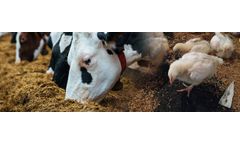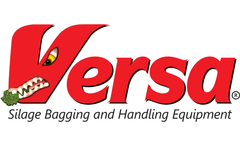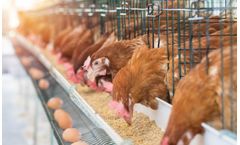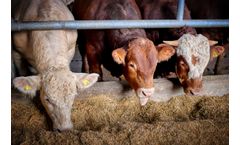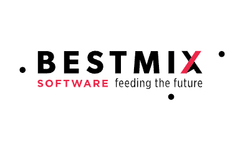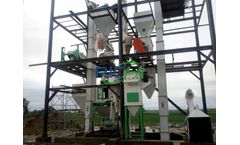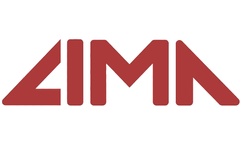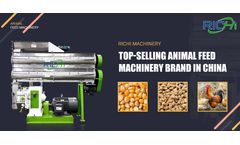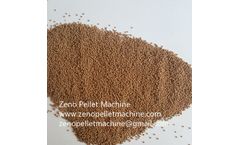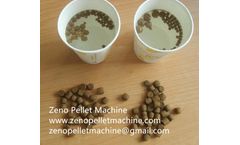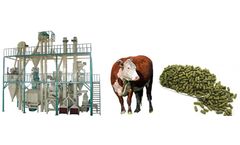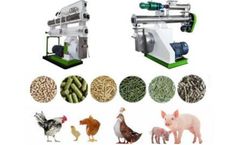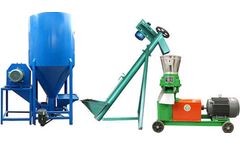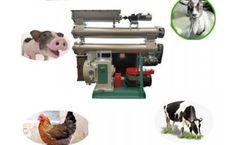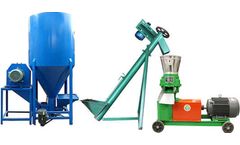Refine by
Feed Ingredient Articles & Analysis
54 articles found
As a result, dairy producers can experience greater variability in feed quality from year to year. So, for many dairy farms – particularly those in colder or remote regions – bagging their silage is a strategic tool for ensuring feed security and maintaining optimum milk production throughout the year. ...
Absorption of Toxins and Enhancing Gut Health One of the most significant roles biochar plays in animal digestion is its ability to absorb toxins. Many feed ingredients, especially in industrial farming, may contain unwanted contaminants such as mycotoxins, heavy metals, and other pollutants. ...
As a cost saving alternative to dry grain supplementation, bagged snaplage/earlage offers high energy content and easy digestibility Dietary supplementation with dry grains has traditionally been utilized as an economical way to meet the high energy demands of the herd, particularly when forage is scarce or of low quality. However, dairy farmers are increasingly turning to high moisture corn ...
In animal nutrition, the primary enzyme classes utilized include: Carbohydrases: These include amylases, cellulases, and xylanases that target non-starch polysaccharides (NSPs) in feed ingredients. Many animals, particularly non-ruminants like poultry and swine, lack endogenous enzymes to fully degrade NSPs, such as cellulose and hemicellulose found in plant ...
Developing a Cost-Efficient Strategy for Continuous Quality Monitoring of Feed Ingredients Rich-protein grain, cereals, oilseeds and various by-products are the common feed ingredients for poultry and swine. In recent years, farmers worldwide are struggling with the increasing prices of raw materials which resulted in the need ...
Furthermore, biochar-amended bedding can serve as a valuable source of carbon for composting, thus closing the nutrient loop and promoting sustainability. Feed Additive Recent studies have explored the potential benefits of incorporating biochar into poultry feed as a dietary supplement. By blending biochar with feed ingredients, ...
Reduction of Mycotoxin Effects Adsorption properties of biochar: Biochar produced by biochar production equipment has a high adsorption capacity, making it effective in binding mycotoxins commonly found in feed ingredients. By reducing mycotoxin exposure, biochar helps improve feed safety and animal performance. ...
As a feed producing company the volumes to process, the legislation imposed and the time pressure to get feed to the market are so high you cannot do this without an appropriate tool. The fact that we deliver our software already close to 50 years to the industry is only more proof that the feed industry saw the need to digitize their data and ...
ByBESTMIX
What should I do if the chicken feed handling equipment can not be pushed? Experiencing this issue, lots of friends will certainly assume that this circumstance will likewise happen when their feed pellet equipments are generating feed pellets. ...
Why Use Pellet Machinery for Making Animal Feed Animal feed pellet machinery can be electric flat die feed pellet mill, diesel flat die feed pellet mill or ring die feed pellet mill according to the production scale. They are the feed pellet machinery for sale in the global market. Flat die ...
Lately, several clients reported that the poultry pellet maker produced a lot of powder, as well as the pellets were not limited sufficient, the feed pellets were constantly soft, so what occurred? Related post: Tanzania 1-2t/h poultry feed mill In general, is this taken into consideration a feed active ingredient or formula? ...
Krill is a source of natural carotenoids. Over 95% of the pigments present in krill are in the form of asthaxantin, which is the only type of pigment that fixes onto the flesh of salmon when krill is used in the diet and the flesh color is the same that it is found in wild salmon (Hue). Pigments in krill are esterified giving them more stability. Asthaxantine is not only a pigment, but also ...
Quality of feed ingredients: if the types, origin, grade, foreign matter content and storage conditions of feed ingredients are different, the difference of nutritional component will be large. Thus, feed ingredients have a direct effect on the nutrient composition and quality of fish ...
Why we need fish feed extruder machine Unique soft pellet formulation • Natural ingredients Less waste – improved water quality • Sustainably sourced ingredients Why Catfish Farmers Prefer to Make Own Fish Feed Pellets? Lots of cheap raw materials for making catfish feed pellets are ...
We can customize the cattle feed pellet plant for your choose. Cattle Feed Pellet Introduction Cattle feed pellet is a type of compound feed mainly made from barley, forage, bean, bran, wheat, corn, and additives, such as vitamins, minerals, and other essential micro-ingredients. ...
The impact of the different feed ingredients vary significantly and may be surprisingly high or low depending on their origin and the way they are produced. ...
ByBESTMIX
Animal Feed Machine For Making Feed Pellets Animal feed pellet machinery can be electric flat die feed pellet mill, diesel flat die feed pellet mill, or ring die feed pellet mill according to the production scale. ...
Here we are going to talk about the pellet making machine for making livestock feed, poultry feed, or fish feed, etc. Why Use Feed Pellet Machine For Making Animal Feed Animal feed pellet machinery can be electric flat die feed pellet mill, diesel flat die feed ...
Here we are going to talk about the pellet making machine for making livestock feed, poultry feed, or fish feed, etc. Why Use Feed Pellet Machine For Making Animal Feed Animal feed pellet machinery can be electric flat die feed pellet mill, diesel flat die feed ...
Here we are going to talk about the pellet making machine for making livestock feed, poultry feed, or fish feed, etc. Why Use Feed Pellet Machine For Making Animal Feed Animal feed pellet machinery can be electric flat die feed pellet mill, diesel flat die feed ...


